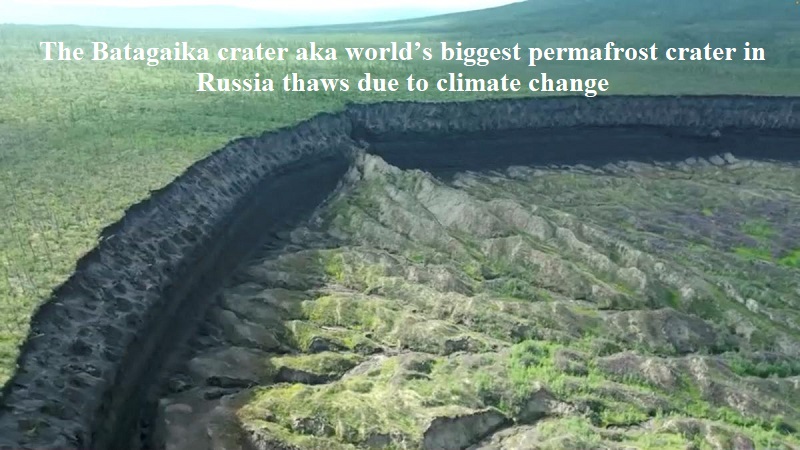
According to a report by Reuters on Friday (July 21), the Batagaika crater, the world’s largest permafrost crater located in Russia’s Far East, is thawing, causing concern among scientists as this “mega slump” poses a threat to cities and towns in northern and northeastern Russia.
NASA defines permafrost as ground that remains completely frozen at or below zero degrees Celsius for at least two consecutive years. These permanently frozen grounds consist of soil, rocks, and sand held together by ice. Permafrost is most common in regions near the North and South poles and covers significant areas of the Earth. Although almost a quarter of the Northern Hemisphere’s land area has permafrost underneath, the regions with permafrost are not always covered in snow.
Local residents near the Batagaika crater refer to the one-kilometer-long massive gash in the Siberian landscape as the “gateway to the underworld.” The crater started forming in the 1960s due to deforestation, which resulted in the loss of ground ice, causing the land to erode and sink.
According to lead researcher Nikita Tananayev from the Melnikov Permafrost Institute in Yakutsk, the slump’s expansion is a “sign of danger.” The rapid growth of the crater has already threatened cities and towns in northern and northeastern Russia, with buckled roadways, split houses, and disrupted pipelines.
The ongoing vast wildfires in the area have exacerbated the problem, as they have intensified the thawing of the permafrost. As temperatures continue to rise, more mega-slumps like the Batagaika crater are expected to form, releasing greenhouse gases stored in the thawed soil into the atmosphere and contributing to further global warming.
While the exact rate of the Batagaika crater’s expansion remains unknown, the soil under the slump, reaching about 100 meters deep in some places, contains a significant amount of organic carbon. This poses a further threat as it releases more greenhouse gases into the atmosphere, contributing to climate warming in the coming years.
Scientists are alarmed by the situation and warn that as air temperatures rise, the expansion of the crater is likely to accelerate, leading to even more severe climate warming in the future.

Post Your Comments